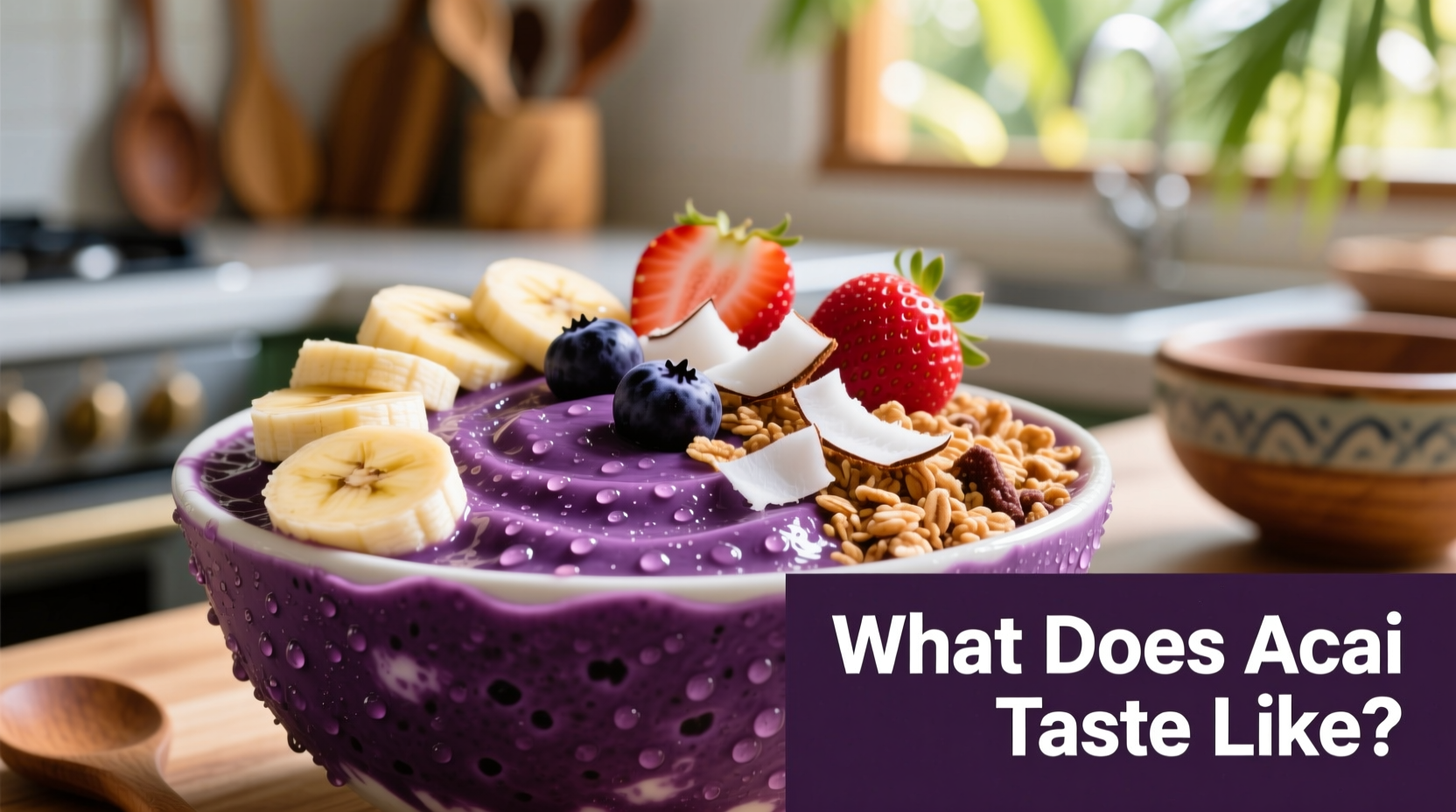Understanding Acai's Distinctive Flavor Profile
When you first taste pure acai, you'll notice its complex flavor unfolds in stages. The initial impression is a deep berry flavor reminiscent of blackberries and unsweetened cocoa, followed by subtle earthy notes and a mild tartness that lingers on the palate. Unlike most commercially available berries, acai contains only about 1-2% natural sugar—making it significantly less sweet than blueberries (10% sugar) or strawberries (4.9% sugar) according to USDA nutritional data.
What makes acai particularly interesting is how its flavor changes based on ripeness. As noted in Journal of Agricultural and Food Chemistry research, unripe acai berries taste predominantly bitter and astringent, while fully ripened berries develop the characteristic chocolate-berry complexity that consumers expect. This ripeness factor explains why many first-time tasters are surprised by acai's actual flavor profile.
Fresh vs. Processed Acai: How Form Affects Flavor
True fresh acai is rarely available outside the Amazon region due to its rapid oxidation. What most consumers experience comes in two primary forms:
- Frozen puree: The most authentic representation of acai's flavor, with minimal additives. High-quality frozen puree maintains the berry's natural tartness and earthy notes.
- Powder: Often more concentrated in flavor but can develop slightly more bitter notes due to the drying process.
Commercial preparations frequently include added sugars or banana to compensate for acai's natural tartness—which explains why many people mistakenly believe acai is naturally sweet. This processing difference creates a significant gap between what pure acai tastes like versus common commercial preparations.
| Flavor Component | Acai Berry | Blueberry Blackberry||
|---|---|---|---|
| Sweetness Level | Low (1-2% sugar) | Medium-High (10% sugar) | Medium (5-7% sugar) |
| Tartness | Moderate | Low-Moderate | Medium |
| Distinctive Notes | Dark chocolate, earthy | Mild, floral | Wine-like, complex |
| Aftertaste | Slightly dry, cocoa-like | Clean, sweet | Berry-forward |
Why Acai Tastes Different Than You Might Expect
Several factors contribute to the common misconceptions about acai's flavor:
- The ripeness factor: Only fully ripened acai develops the characteristic chocolate notes. Unripe berries taste predominantly bitter.
- Processing methods: Freeze-drying versus flash-freezing creates subtle flavor variations that affect the final taste experience.
- Cultural preparation: In its native Brazil, acai is traditionally served with sugar and sometimes cassava flour—which significantly alters the perceived flavor profile.
According to ethnobotanical studies from the National Academies Press, indigenous Amazonian communities have consumed acai for centuries, typically mixing it with water and manioc to balance its natural tartness. This historical context explains why pure acai might taste unexpectedly tart to Western consumers accustomed to sweetened versions.

How to Properly Taste Acai
To experience acai's authentic flavor profile, follow these professional tasting guidelines:
- Serve at proper temperature: Between 40-50°F (4-10°C)—too cold masks subtle flavor notes
- Clear your palate first: Consume neutral foods like plain rice crackers beforehand
- Take small sips: Allow the flavor to develop across different parts of your tongue
- Note the progression: Initial tartness should mellow into berry-chocolate complexity
When evaluating acai products, watch for these quality indicators: deep purple color (not brown), absence of artificial sweeteners in the ingredient list, and a smooth texture without graininess. High-quality acai should never taste predominantly of added sugars or artificial flavors.
Enhancing Acai's Natural Flavor Profile
Rather than masking acai's distinctive taste, these pairing strategies complement its natural flavor:
- Natural sweeteners: A small amount of honey or dates enhances without overwhelming
- Acid balance: A squeeze of lime brightens the earthy notes
- Texture contrast: Toppings like granola provide crunch against the smooth base
- Flavor bridges: Bananas work well because their mild sweetness bridges acai's tartness
Professional chefs like those at Brazil's renowned Instituto de Pesquisas Ecológicas recommend serving acai with minimal additions to appreciate its authentic flavor profile. The growing trend toward "clean" acai preparations reflects this culinary philosophy.
Common Acai Taste Misconceptions
Several myths persist about acai's flavor that deserve clarification:
- "Acai tastes like chocolate": It has cocoa-like notes but contains no actual chocolate
- "All acai is sweet": Pure acai is quite tart—sweetness usually comes from added ingredients
- "Frozen acai tastes different": Properly flash-frozen acai preserves 95% of original flavor compounds
- "Acai powder tastes artificial": High-quality powder maintains authentic flavor when properly processed
Understanding these distinctions helps set proper expectations when trying acai for the first time. The berry's unique flavor profile—somewhere between wild berries and dark chocolate with earthy undertones—makes it a distinctive culinary experience that's earned its global popularity.











 浙公网安备
33010002000092号
浙公网安备
33010002000092号 浙B2-20120091-4
浙B2-20120091-4